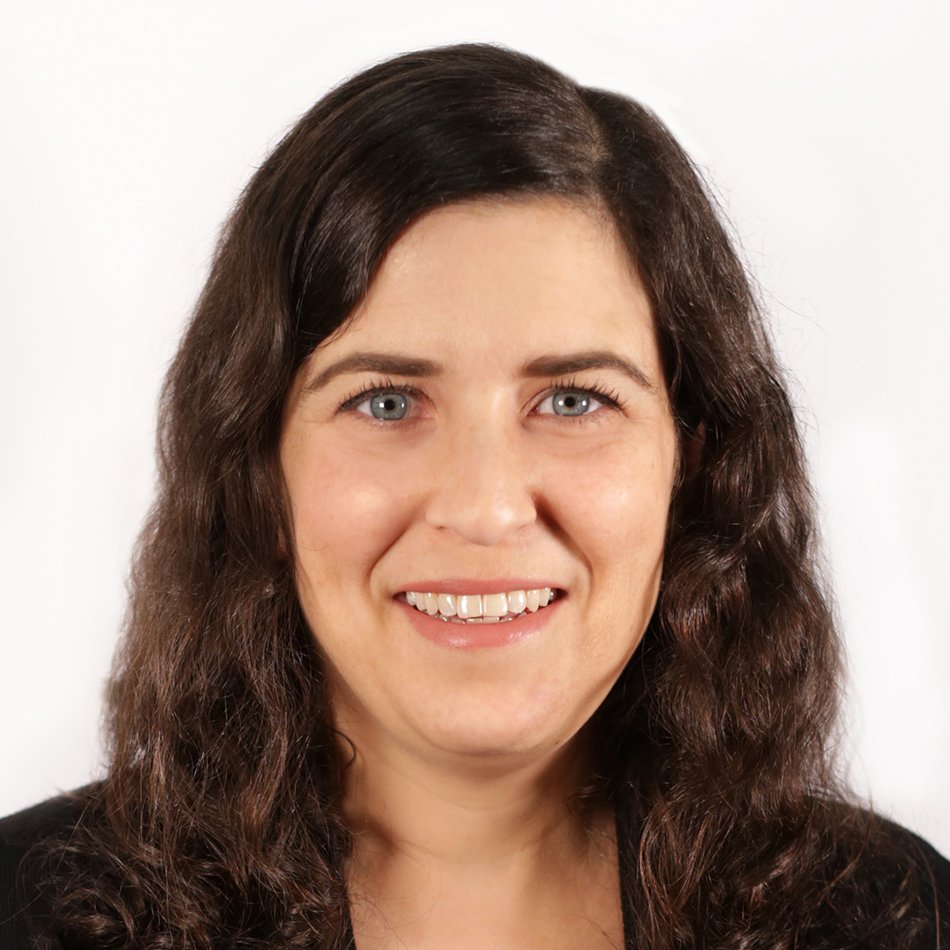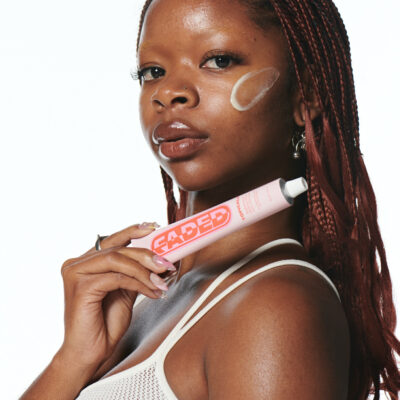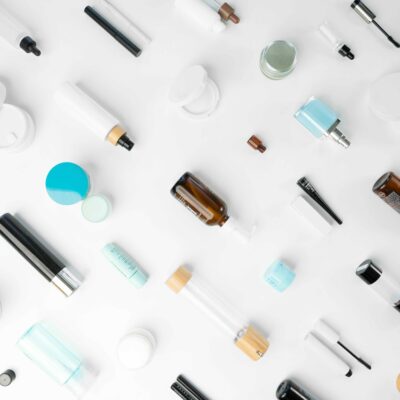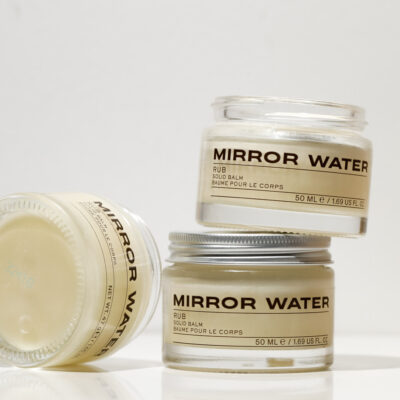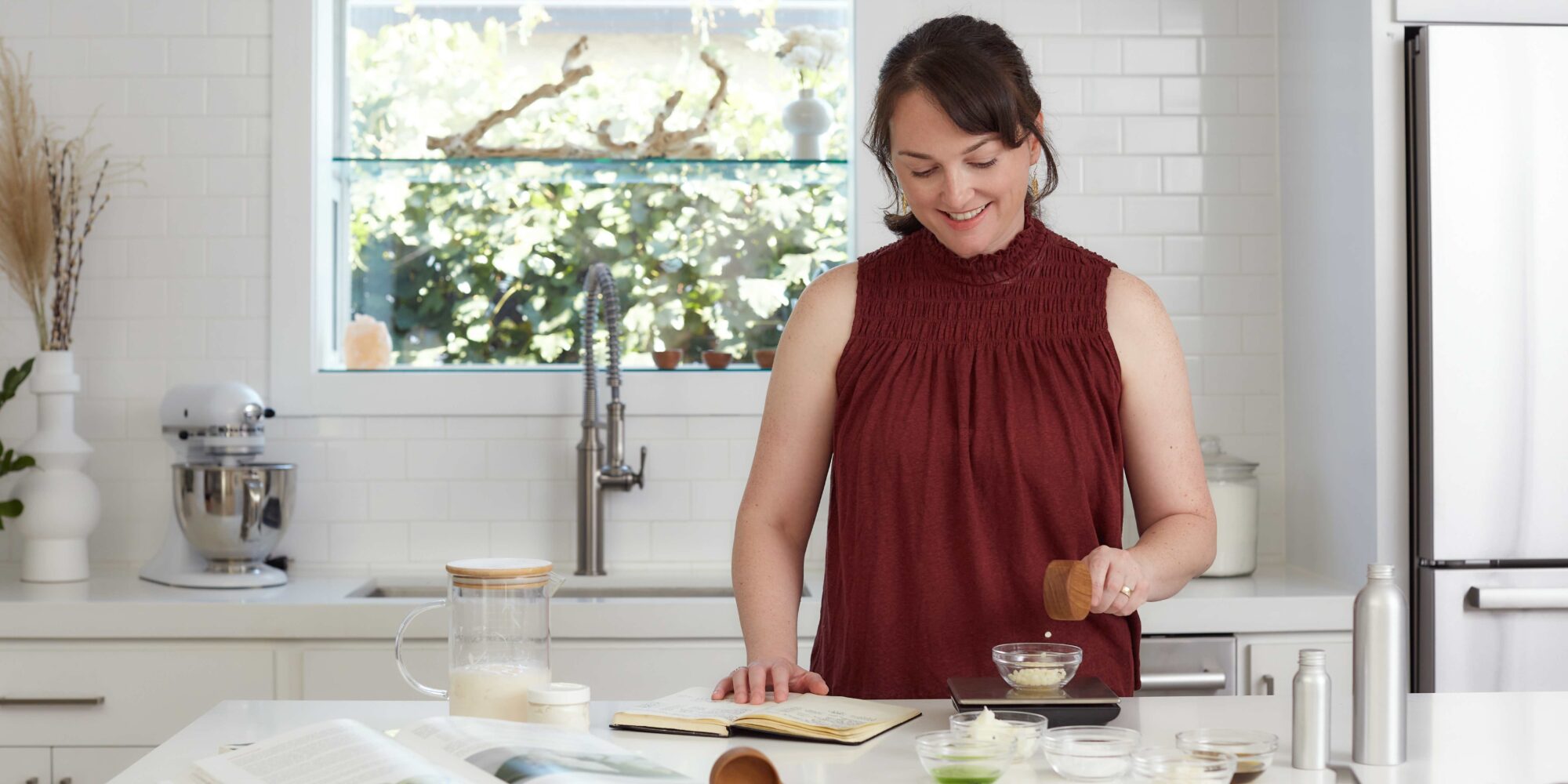
Cosmetic Chemist Valerie George On Why It’s Hard To Find Common Ground In The Clean Beauty Debate And The Complexities Of Sustainability
The barrier between what goes on in the beauty lab and what people see on beauty shelves can seem impenetrable at times. Cosmetic chemist Valerie George is committed to breaking it down. A long-time cosmetic science educator, former EVP of research and development at John Paul Mitchell Systems and co-host of “The Beauty Brains” podcast, she translates product labels, decodes manufacturing processes, and answers controversial questions for consumers and brands.
Her passion for explaining the complexities of the beauty industry is evident at Simply Ingredients, the company she started early last year to provide DIY beauty enthusiasts with unique ingredients from around the world. On its website, George deciphers ingredients, formulas and beauty product equipment. Late last year, following a nearly 9-year stint at JPMS, she decided to focus full-time on Simply Ingredients and Simply Formulas, a formulation house she established with a specialty in haircare and hair color.
“I have a service-oriented mindset,” says George. “On the Simply Formulas side, if I can help a brand own intellectual property and create a product they feel comfortable selling, that’s amazing. And if I can help them manage their manufacturing relationships and get to a better way of doing business, that’s incredible. On the Simply Ingredients side, helping people learn more about their ingredients, where they come from and starting conversations with them, that’s why I did it.”
Beauty Independent decided to start a conversation with George about her background, no-no lists popularized by clean beauty, the difficult balancing acts beauty’s sustainability push engenders, misunderstood cosmetic ingredients, inaccurate marketing of claims, and why indie beauty brands shouldn’t be surprised if manufacturers aren’t promptly returning their calls.
How did you get into beauty?
After grad school, I was tired of cold weather. I’m originally from Ohio and went to grad school in West Virginia at Marshall University. So, I tried thinking of all the biotechnology hotspots in the United States and came up with Boston, Houston and San Francisco. I was thinking San Francisco is in California and should be warm. I showed up in San Francisco in January to job hunt, and it was cold to the bone. I had no idea it could be that cold. I was like, “Wow, I can’t move here.”
I thought, “I will never be in California again, let me fly down to LA for the weekend, do the Hollywood thing and go back to West Virginia.” It was 80-plus degrees, and it had such a good energy. I started looking for jobs and saw a lot of companies were hiring for cosmetic chemists. I thought, “Wait a minute, I can make lipstick for a living?” I got a job at a startup makeup brand and then moved over to hair. That’s what I really love, hair and ingredient technology.
You recently went out on your own. Why?
At Paul Mitchell, I started out as a chemist, had a lot of great experiences and got to move up the corporate ladder. At one point, I was the technical director of the lab. I created ingredient technology that’s patent-pending. I created a device called Hair AI that measured the scalp and hair to detect scalp health and hair damage, and why there is hair damage. I had the best team, but, when you are in those types of roles, you’re really not in the lab and focusing on the ingredient piece.
I started my own company in the meantime as a hobby and passion project. That’s the next chapter of my life. It was the perfect segue to focus on Simply Ingredients and Simply Formulas, which is my other company, to help big brands bring the best formulas to market and help small brands navigate this space. It’s really rewarding to wake up and get to pick what I want to work on every day.
What do you think startup beauty brands should know about what you do?
I think startup companies think cosmetic manufacturers and formulation houses work in a manner or at a pace that is more in line with other industries and that is really not the case. In manufacturing, companies are not short of work, and they often don’t have a robust staff because, when you are in manufacturing, margins are small on products, so the only way you can control overhead is reduced labor. You often have a bare minimum number of people working, and response times can be slow.
At the end of the day, their priority is to the people who are keeping their lights on. There are a lot of brands that don’t have the momentum or capital to be successful in the marketplace, and companies have to triage that. L’Oréal is keeping their lights on, so they have to spend time with them, and there may be another company that’s wasting their time.
A lot of people in manufacturing or R&D lack soft skills or people skills, so the communication may be different, and that’s where I excel. I’m often an interpreter for brands. As an indie brand, you have to be patient with this side of the industry. Every brand I’ve ever worked with has been like, “Wow, this sounds crazy,” but I’m always like, “This is normal, don’t worry.”
A lot of smaller brands have complained about being in the back of the line at manufacturers as the pandemic created a crunch. What do you see?
I don’t think it’s intentional that smaller brands are being pushed out, but the reality is that COVID was one of the best things that ever happened to the industry in terms of explosive growth. I hear of some companies having triple-digit growth year-over-year. Many manufacturers were already at capacity before COVID, and they are over capacity now. You have to support who is paying your bills.
With a lot of brands, it’s hard for them to know who is a fit for them, and they may not be working with a manufacturer who is a fit. They probably should be working with a manufacturer who’s a better fit for their brand, but the growth that a lot of brands are experiencing is causing a lot of strain on manufacturing and the ingredient supply issues are causing an additional burden. The last two years have been very stressful.
When you think about the supply chain constraints going on, what can brands do?
It’s very difficult, and it’s even very difficult for the large brands with large purchasing power and long-term relationships with ingredient suppliers. In some instances, this is where I see owning your intellectual property is to your advantage. You can change manufacturers if your manufacturer is over capacity and can no longer service you. I used to say that you don’t really need to own your IP, but I would say now more than ever, because of the constraints on manufacturing and the ingredient supply, having your own IP is very beneficial for controlling your destiny.

Is there an ingredient you believe is especially misunderstood?
A lot of ingredients are misunderstood. Sulfates have come back into the conversation because of The Ordinary. They are incredibly misunderstood and maligned. The origin of that misunderstanding is from a brand that created a sulfate-free product that led to a wave of them. It was said they were bad for hair color and your hair. Can they be? Yes, but I’ve made sulfate-free shampoos that have destroyed hair. I commend The Ordinary for saying they are using sulfates and—guess what?—the hair is fine.
I think palm-derived ingredients are also misunderstood. It’s a very complicated topic, and a lot of it comes down to the geopolitical situation in Indonesia. That’s not one that’s going away soon. They’re not controversial from a performance standpoint, but from a sustainability and politics perspective, they are.
What’s your take on palm oil?
Everything has a pro and a con—and that’s difficult when brands are making choices, and they are communicating the choices they have made. If you are looking at palm from a sustainability perspective and its bio burden, palm is superior to coconut oil and rapeseed. It definitely produces more oil per hectare.
But you can look at it from a labor perspective—are children being used? —and an environmental perspective. Are any habitats being destroyed? You have to pick what’s important to you and your brand because nothing, whether it’s palm or PCR plastic or parabens, nothing is the perfect solution, and you have to understand the consequences of making a choice.
What do you think about the petrochemicals discussion?
Again, it depends on the angle you’re looking at it from. If you are looking at petrochemicals overall in cosmetic products, really what we are using from the petrochemical industry is byproducts. We are taking things that are as a result of petroleum refinement and repurposing them for another industry. It’s not like we are drilling for oil so we can have Vaseline on our faces for slugging.
If people are concerned about the environmental impact of petrochemicals in their cosmetics, they should really be doing an overall assessment of their life. If they are looking at it from a safety perspective, they are getting gray hair over nothing because there’s a lot of safe ingredients in beauty that come from the petrochemical industry.
Is there something in particular you’re excited about that’s happening in the beauty industry?
I’m really exciting for the upcycling that’s happening. I want to take aside all the products that already come from upcycling and applaud the companies that have been using upcycled ingredients for years from different waste streams. And I really want to applaud companies that are looking into different waste streams from other industries and saying, “What can we do about this?”
Is there something in particular you’d like the beauty industry to move away from?
That’s really a tough question because it implies things aren’t being done well or maybe it maligns something or puts something in a negative light, but I would say, if I’m thinking from the brand or marketing perspective, I want brands and marketing people to stop slandering ingredients or talking about what’s not in their products. We also need the retailers to do that because I think the retailers are really driving what goes into products from their free-from lists.
On the one hand, I appreciate these lists from retailers because it allows the retailer to set and state their values, but it’s done in a way that implies the ingredients are harmful, and most of the ingredients on their lists are safe for products. Consumers might think, “Oh my god, I don’t want BHT, it’s not safe for products,” but it’s really safe for cosmetics up to .8%. I think that’s creating a lot of confusion.
Consumers are smarter than ever. They are more interested than ever in talking to people in lab coats, but they are also interested in products that work and are looking to retailers to set standards. We all need to be in alignment so it’s fair to the ingredients. For example, parabens are on no-no lists for clean beauty. They are efficacious at low levels, and they have a low propensity for allergenicity. Not using them has caused a lot of issues because the things we have used instead are less safe.
The way it’s being framed implies these ingredients are harmful, but, in reality, it’s the preference of the brand or retailer—and it’s not communicated well. If we can move away from the way it’s being communicated, I think that could help. It’s OK to not want to use something, but saying it’s not safe or not clean is a problem.
What steps do you feel could be made going forward? Is there common ground to be found in the clean beauty debate?
The challenge is that there is no common ground. That’s the core of it. I believe one of the things that Simply Ingredients promotes is you can create your own beauty standards. If you want to use something, that’s great. If you don’t want to use something, that’s great.
But when you put it on a platform that’s so definite that you don’t want to use it because it’s blank and that’s not necessarily the case, it creates a lot of confusion and, unless we have some kind of regulation, I think there will still be a lot of confusion. I think the consumer confusion is spiraling out of control.
Do you want regulatory changes?
I think it would be helpful if there were some framework that helped brands get to the regulations that already exist, if that makes sense. I think the laws we have are pretty fair. Products have to be safe. They can’t be adulterated, and whatever you say is in the bottle has to be in the bottle.
In the compliance piece, if we had some framework to get there, that could be beneficial, like Europe has done. It has to be at the federal level. The challenge is that states make their own regulations and that creates a lot of variance. That’s hard to keep up with even for the biggest brands.
Do you think there should be more transparency around the companies that manufacture for brands?
No because I don’t know how that information would help people at the end of the day. It’s up to the brand to do their diligence on the manufacturer and make sure they have the appropriate certifications and are following the appropriate procedures. It’s kind of how a someone goes into a restaurant and looks at the score from the food department. Brands should be doing that for their manufacturers.
I don’t know how consumers knowing the manufacturer will help, but I think brands should be required to show proof of how they got to their marketing claims. They might be saying, “98% of people said this,” and they only asked 11 people, and 10 of them said what they’re claiming.

Do you feel like there should be standards for testing?
There is in the claims testing world. Typically, testing facilities that you go to in order to get claims, they’re using industry-accepted methodologies for claims evaluation. They don’t do weird stuff and deviate from protocol to get you want you want to hear. If you want to make a claim about less breakage in hair, for example, the protocol is standardized across the industry. Even in RIP [repeat insult patch] testing for skincare, there’s a standard across the industry.
The lack of consistency comes in when marketing manipulates the language or presents the information in a way that’s not totally representative of the testing because it sounds better to say it a certain way over another. I’ve seen a couple of brands posting the protocols that they get from testing companies. The consumer might not understand the testing method or its relevance, but I applaud brands that are willing to reveal that.
Sometimes, we go down social media rabbit holes reading posts from cosmetic chemists and come out more bewildered because there are varying explanations for things. What’s going on?
I think it’s because people have varying levels of expertise. When it comes to being a science communicator and an expert on social media, a lot of people are afraid to admit they don’t know something. They know a little bit and maybe they try to do quick research. A lot of the science communicators and cosmetic chemists online haven’t worked in the industry, but they are just really good science communicators.
When you work for yourself or you haven’t had industry experience, you have a lot of missing perspectives on situations, but people are looking to you to provide answers, and you provide an answer as an authority on the subject. I see a lot of misinformation from people that I know in the industry or from the internet. I don’t get into it with them. If I challenge them, they’re like, “Why are you challenging or bullying me?” It’s not about that.
If you are looking at information, you should ask about people’s credentials and expertise. My expertise is really in hair, hair color and ingredient technology because I’ve focused on that for years.
Where do you see the scalp health haircare product segment going?
We will continue to see it grow. We will see brands exploring pushing the boundaries of it. We have had scalp products in the past. It’s not a new thing, but we have a lot of new ingredients that we know provide a lot of benefits for the skin, and we want to see if they have the same value for the scalp. Brands will be making new scalp products to add to regimens.
For example, we use a cleanser every day, but we use a scrub once a week, so what’s a regimen that we can build for the scalp with these and what technologies can go together? We might say, “OK, maybe putting glycolic acid on the scalp isn’t a good idea because of scalp sensitivity, but what will work?” So, we will see some products come on to the market and some come off, but we will continue to see ingredients good for the face move up to the scalp.
What about the hair color arena?
Thanks to COVID, people are embracing gray hair, so how do we work with gray hair? The scientific community is split on whether it’s morphologically different. Some research says it is and some says it isn’t. I have gray hair on my head, and I know it looks a little different than the rest of my hair. The gray hairs are a little stiffer.
I think we will see a lot of focus on how to care for gray hair. Believe it or not, gray hair can also benefit from color. Sometimes, it gets a yellow look. I think we will see a huge surge in products to care for people who want to be gray, but still want bright, soft, touchable hair. It would be cool to have a line called Grayce about caring for gray hair. That’s a free idea. Anyone can have that.
